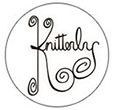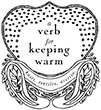1. Trimfoot Recalls Children's Soft-Soled Sneakers Due to Choking Hazard; Sold exclusively at Macy's
http://www.cpsc.gov/en/Recalls/2014/Trimfoot-Recalls-Childrens-Soft-Soled-Sneakers/
4. Pure Baby Organics Boys Hoodie Recalled by Chantique’s Corp. Due To Strangulation Hazard
http://www.cpsc.gov/en/Recalls/2014/Pure-Baby-Organics-Boys-Hoodie-Recalled-by-Chantiques-Corp/
*********************************************************************************************************
1.
Recall Date: September 30, 2014
Recall Number: 14-284
Trimfoot Recalls Children's Soft-Soled Sneakers Due to Choking Hazard; Sold exclusively at Macy's
Recall Summary
Name of Product: Children's soft-soled shoes
Hazard: A small metal eyelet can detach from the inside of the sneaker, posing a choking hazard to infants.
Remedy: Refund
Consumer Contact: Trimfoot at (800) 325-6116 from 8 a.m. to 4:30 p.m. Monday through Friday, or online at www.trimfootco.com, then click on Recall on left side of the page for more information.
Recall Details
Units: 5,300
Description: The recall involves First Impressions high-top, soft-soled sneakers for infants that are crawling or standing. The recalled shoes have blue denim soles and uppers, brown canvas tongues, tan shoe laces and white polyurethane
toes. Each upper has eight 3/16 inch eyelets for the laces. The shoes came in sizes 0, 1, 2 and 3. Style number 42090 is on a cloth tag inside of shoe.
Incidents/Injuries: None reported.
Remedy: Consumers should immediately take the recalled shoes away from children and return the shoes to Macy's or contact Trimfoot for a full refund.
Sold exclusively at: Macy’s stores nationwide from February 2014 to August, 2014 for about $17.
Importer: Trimfoot Co. LLC., of Farmington, Mo.
Manufactured in: China
*********************************************************************************************************
4.
Recall Date: September 30, 2014
Recall Number: 14-287
Pure Baby Organics Boys Hoodie Recalled by Chantique’s Corp. Due To Strangulation Hazard
Recall Summary
Name of Product: Boy’s Zipper Hooded Hoodie
Hazard: The sweaters have a drawstring around the neck area which poses a strangulation hazard to children. Drawstrings can become entangled or caught on playground slides, hand rails, school bus doors or other moving objects, posing a
significant strangulation or an entanglement hazard to children. In February 1996, CPSC issued guidelines about drawstrings in children's upper outerwear. In 1997, those guidelines were incorporated into a voluntary standard. Then, in July 2011, based on the
guidelines and voluntary standard, CPSC issued a federal regulation. CPSC's actions demonstrate a commitment to help prevent children from strangling or getting entangled on neck and waist drawstrings in upper outerwear, such as jackets and sweatshirts.
Remedy: Refund
Consumer Contact: Chantique’s Corp collect at (213) 629-3222 from 9:00 a.m. to 5:00 p.m. PT, Monday through Friday or email at info@chantiquesshowroom.com for more information.
Recall Details
Units: About 60
Description: This recall involves a Pure Baby Organic boy’s hoodie made of 100% cotton. It comes in solid gray with a red drawstring that is inside the lining of the hood that surrounds the face. They have a zipper front closure. The recalled
hoodies were sold in toddler boy’s sizes 2t to boy’s size 3. There is a white label sewn into the neck line that has the name Purebaby on it. There is also a label underneath it that has the size printed on it and states Made in India. A label with style
number PB1613.B12 is sewn into an inside side seam of the garment under the washing instruction label.
Incidents/Injuries: None Reported
Remedy: Consumers should immediately take the hoodie away from children. Consumers can remove the drawstring from the garment to eliminate the hazard or return it to the place of purchase for a full refund.
Sold at: Children’s boutiques nationwide and other stores such as Elephant Ears, Pumpkin heads, Sprouts and on-line at www.Nordstromrack.com from January 2014 through August 2014 for about $62.
Importer: Chantique’s Corp., Los Angeles, Calif.
Manufactured in: China












